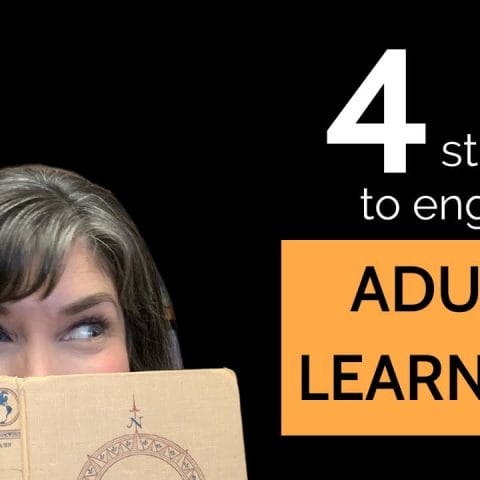Artificial Intelligence (AI) is changing how we learn and grow in the workplace. It uses advanced tech like machine learning and natural language processing. These tools are making employee training, content making, and learning experiences better.
Learning and development experts are watching AI closely. They want to use it to improve work, creativity, and decision-making. AI is making learning more personal and efficient.
AI helps by finding what employees need to learn and making training fit their needs. It also finds the best learning materials, saving time and making learning better.
But, using AI in learning and development has its challenges. There are worries about controlling AI, quality, and how well it can grow. To overcome these, we need to know how to use AI well.
Key Takeaways
- AI is changing learning and development by making it more personal, using smart systems, and creating content automatically.
- AI can find what employees need to learn and make training fit their needs, saving time and making learning better.
- Challenges like controlling AI, quality, and growth must be solved for AI to work well in L&D.
- Knowing how to guide AI is key to getting the best results in L&D.
- AI can make learning more affordable, always improving, and more engaging for everyone.
The Power of AI in Transforming L&D

The world of learning and development (L&D) is changing fast, thanks to AI. AI is making content creation and learning experiences more personal. This is changing how companies train their employees.
AI’s Ability to Revolutionize Content Creation
AI models like GPT-3 and ChatGPT help L&D pros make training materials quickly and well. These tools make creating content easier, so experts can focus on creative tasks. AI content creation can save a lot of money, with studies showing 20% to 30% savings in L&D.
AI’s Role in Personalized and Adaptive Learning
AI is also changing how learning is tailored for each person. Adaptive learning systems and intelligent tutoring systems use AI to make learning personal. This makes training more engaging and effective.
It also helps keep employees happy and loyal. The Korn Ferry Workforce 2024 Survey found that many people want to stay at jobs where they can learn and grow.
“27% of respondents to the Workforce 2024 Survey listed ‘excellent learning and development opportunities’ as one of the top five reasons to choose a new job, highlighting the impact of robust learning programs on attracting talent.”
AI is making a big difference in L&D. It opens up new ways to create, personalize, and adapt learning. These changes can make L&D more effective and help companies succeed.
L&D Use Cases for AI

The world of learning and development (L&D) is changing fast, thanks to AI. AI brings many benefits to L&D, making it more efficient and effective. It can automate tasks like making training content and analyzing feedback.
This lets L&D teams focus on creative and strategic work. They can now spend more time on planning and making learning experiences better.
Enhancing Storytelling and Scenario-Based Learning
AI is also key in making training more engaging. It helps create learning experiences that learners find interesting and relevant. AI uses natural language and generative tools to make content that’s both fun and educational.
This approach makes learning more enjoyable and helps learners understand better. It brings stories to life, making learning more interactive and effective.
| AI Use Cases for Learning and Development | Key Benefits |
|---|---|
| Automating Time-Consuming Tasks | Frees up L&D teams to focus on strategic and creative work |
| AI-Powered Storytelling and Scenario-Based Learning | Generates engaging, customized learning experiences that resonate with learners |
| Personalized and Adaptive Learning | Tailors the learning experience to individual needs and interests |
| Skill Gap Analysis and Recommendations | Identifies skill gaps and suggests targeted training opportunities |
| AI-Assisted Content Creation and Curation | Streamlines the content development process and enhances quality |
As AI becomes more common in L&D, professionals will use it to improve learning. They’ll make learning more engaging and effective. This will help both organizations and learners achieve their goals.
Challenges and Concerns with AI in L&D
AI in learning and development (L&D) has big benefits, but it also brings challenges. One major issue is the lack of control over AI output. This can lead to training content that doesn’t meet standards. There’s also worry about the quality of AI-generated content, which might seem low-quality or generic.
L&D experts need to watch the data sources and check the accuracy of AI content. This ensures it fits their learning goals and the company’s needs.
Lack of Control Over Output
The challenges of AI in learning and development include the lack of control over AI output. This can cause training content that doesn’t follow rules or match what’s needed. L&D teams must keep an eye on the data and quality of AI content. This way, they can make sure it meets their standards.
Quality Concerns with AI-Generated Content
Another big worry with AI in L&D is the quality of AI-generated content. Sometimes, this content is seen as low-quality or too generic. L&D experts need to check if the content is accurate and relevant. This helps keep the training programs effective and of high quality.
| Challenge | Impact | Potential Solution |
|---|---|---|
| Lack of Control Over AI Output | Non-compliant or misaligned training content | Carefully manage data sources and monitor AI output quality |
| Quality Concerns with AI-Generated Content | Low-quality or generic training content | Evaluate accuracy and relevance of AI-generated content |
To tackle these issues, L&D experts need a careful and strategic plan. They should manage data sources well, check AI content quality, and make sure it aligns with goals. This way, they can use AI’s benefits while avoiding its downsides.
What is the role of AI in learning and development?
AI is changing how companies train their employees. It automates tasks, makes learning more engaging, and personalizes experiences. This helps L&D teams create better learning experiences.
AI makes learning more personal. It looks at what each learner needs and provides content that fits. This means employees get training that really matters to them.
AI also helps with adaptive learning. It adjusts the learning material based on how well someone is doing. This way, learners can move at their own speed and reach their goals faster.
AI makes learning more fun too. It uses storytelling and simulations to make learning more engaging. This includes games and virtual reality, which make learning more exciting.
But, using AI in learning has its challenges. There are worries about losing control and quality issues. To overcome these, it’s important to use AI wisely and align it with learning goals.
In summary, AI is a game-changer in learning and development. It offers many benefits that can make training more effective and engaging. By using AI, L&D teams can help employees grow and create a culture of continuous learning.
Mastering the Art of Prompts
The era of AI learning is here, and L&D pros need to learn about prompts. The quality of what you give to AI, or prompt, greatly affects what you get back. By getting good at making great prompts, L&D teams can make sure AI answers fit their learning goals and company needs.
Knowing how to prompt engineer is key to using AI tools well in learning. A survey shows 65% of trainers think it’s vital to learn how to make good prompts with AI. Also, 82% of teachers say good prompts help AI give better, more useful answers in school.
Trainers need certain skills to make great prompts for AI. They must know about AI, creativity, thinking, education, and being flexible. These skills help them optimize AI output and make sure it fits what their students need.
Trainers should know how to use AI, make prompts fit the context, and give clear steps. They should also tell AI what to look for and keep answers relevant and professional. By doing this, L&D teams can use AI prompting to make learning fun and effective.
“Effective prompts can guide AI to provide accurate results by understanding human intent and delivering tailored outputs aligned with unique requirements.”
As AI gets better, we need to keep learning how to write prompts. Working with others, staying up-to-date with AI news, and thinking about ethics are important. These steps help us get better at writing prompts in the AI world.
AI-Assisted Authoring: Empowering SMEs
As more people need to learn new skills, L&D teams are using AI to make content creation easier. AI tools help SMEs share their knowledge without needing to be experts in teaching. This makes learning content development more accessible and efficient.
AI-powered authoring platforms work well with learning management systems. They give SMEs templates and prompts to use. This lets SMEs focus on their area of expertise while AI handles the details.
Using AI in authoring saves time and money. It also makes sure the content fits the needs of the learners. AI looks at learner data to find out what they need to learn next. This helps SMEs create better content that learners find interesting and useful.
AI is changing how we learn and develop. Using AI tools for authoring is key to this change. It helps L&D teams work better together, be more efficient, and create learning experiences that really make a difference.
“AI-assisted authoring tools empower subject matter experts to create engaging and relevant learning content, without the burden of complex instructional design. This democratization of content creation unlocks new possibilities for L&D teams to drive organizational upskilling and transformation.”
AI-Powered Skill Tagging and Recommendations
In today’s fast-changing world of learning and development (L&D), AI is a game-changer. It uses advanced algorithms to tag skills in eLearning courses and paths. This helps L&D teams give personalized learning advice to their employees.
AI makes it easy for L&D pros to organize content and recommend the best training. This approach makes learning faster and more relevant. It ensures employees get the right training at the right time, helping them grow and the company succeed.
Streamlining Skill-Based Learning Journeys
AI changes how employees learn new skills. It offers personalized advice that fits their needs and skill gaps. This makes learning more efficient and focused on growth.
- AI skill tagging saves time by finding the best content for each learner.
- Personalized learning helps employees get the training they need for their roles.
- AI adjusts learning based on progress, making it more effective.
AI in skill-based learning makes companies more agile and adaptable. It prepares the workforce for the changing business world.
“AI-powered skill tagging and personalized recommendations are transforming the way organizations approach learning and development, enabling them to unlock the full potential of their workforce.”
Accelerating Upskilling with AI
In today’s fast-changing business world, keeping employees skilled is a big challenge. Luckily, AI-powered upskilling offers a game-changing solution. It uses AI to suggest personalized training, helping L&D teams boost employees’ skills quickly.
AI upskilling tools create custom learning plans for each employee based on their job and skills. This means no more one-size-fits-all training. It also ensures that employees get the latest and most relevant training, helping them excel in their roles.
AI makes upskilling faster and more effective. This boosts employee performance and keeps them happy. It also helps the company stay ahead in a changing market.
| Benefit | Impact |
|---|---|
| Personalized training recommendations | Improved employee engagement and skill development |
| Automated content curation | Timely access to the most relevant learning resources |
| Accelerated upskilling initiatives | Faster adaptation to market changes and competitive advantage |
By using AI for upskilling, companies can help their teams grow and succeed. This approach not only helps employees but also makes the company stronger and more resilient over time.
The Future of AI in L&D
Artificial intelligence (AI) is changing learning and development (L&D) fast. It will change how L&D roles work. AI will do some tasks for us and create new jobs.
AI will make learning personal. It uses data and smart algorithms to fit learning to each person. This makes learning more fun and effective.
AI’s Impact on L&D Roles and Responsibilities
AI will change some L&D jobs, but it will also create new ones. L&D teams will need to learn about AI. They will focus on using AI wisely.
Optimizing Learning Engagement and Cost Savings with AI
AI will make learning better and cheaper. It helps L&D teams see what works and what doesn’t. AI also makes learning more engaging and saves time and money.
Organizations that use AI well will lead the way. They will offer better learning experiences. AI helps L&D teams make learning personal, engaging, and cost-effective.
“The future of AI in L&D holds great promise, with the potential to revolutionize the way we approach learning and development within organizations.” – [Expert Name], [Expert Title]
Conclusion
AI is changing how we learn and develop, bringing many benefits. It helps make content better, makes learning personal, and makes processes smoother. It also makes L&D efforts more effective.
But, using AI in L&D comes with its own set of challenges. By tackling these issues and learning how to use AI well, L&D experts can unlock its full potential.
AI tools can make employee training more efficient and creative. This leads to better business results. As technology keeps evolving, using AI is key for L&D teams to keep up and offer the best learning experiences.
The main points about AI in L&D are clear. It can change content creation, make learning personal, and make tasks easier. By facing the challenges of AI, L&D experts can use it to drive innovation and success in their organizations.
FAQ
What is the role of AI in learning and development?
AI is changing the game in learning and development (L&D). It’s using technologies like natural language processing and machine learning. These advancements are set to change how we train employees and create learning content.
How is AI transforming L&D in profound ways?
AI is making big changes in L&D. It’s making content creation faster and more personalized. AI can also adapt learning to fit each learner’s needs and abilities.
What are the key use cases for AI in L&D?
AI has many uses in L&D. It can automate tasks and make training more engaging. It also helps in creating scenarios for learning.
What are the challenges and concerns with AI in L&D?
There are challenges with AI in L&D. One is the lack of control over AI’s output. There’s also worry about the quality of AI-generated content. L&D teams need to manage data and check AI’s accuracy to meet their goals.
How can L&D professionals leverage AI to empower subject matter experts?
AI tools can help L&D teams empower SMEs. These tools make it easier for SMEs to create learning materials. They don’t need to be experts in teaching.
How can AI streamline skill-based learning journeys for employees?
AI helps in organizing learning paths for employees. It uses algorithms to match skills with courses. This makes it easier to recommend the right content for each learner.
How can AI accelerate upskilling initiatives within organizations?
AI can quickly suggest courses for learners. It does this based on their job and skills. This makes learning more tailored and efficient.
How will AI impact the roles and responsibilities of L&D professionals?
AI will change L&D roles in big ways. It will make learning more personalized and engaging. It will also give insights to improve L&D efforts.
What is the key to leveraging AI in L&D effectively?
The key is mastering prompt engineering. This skill helps L&D professionals guide AI’s output. It ensures the content meets their learning goals.





